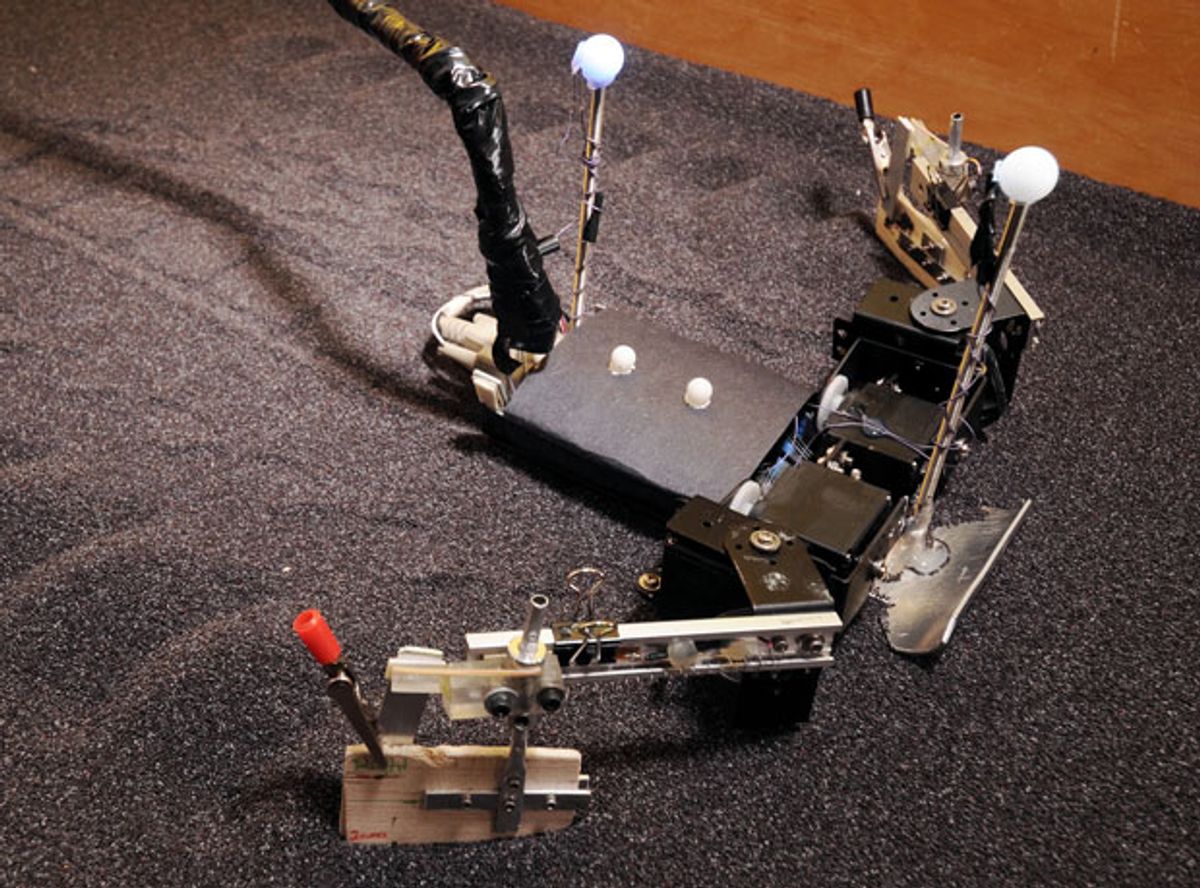What are the odds of us having two articles this week about robotic turtles? As of today, it's 100 percent, thanks to this robotic baby sea turtle, um, thing. It's called Flipperbot, and it's designed to help biologists figure out how animals with flippers move in sand, and to help roboticists figure out how to get robots with flippers to do the same.
I'll admit that putting "unstoppable" in our headline is probably a bit cavalier: this robot is most certainly stoppable, and in fact part of the point of constructing it is to figure out how to make robots less stoppable in granular media. In general, we humans don't have a lot of firsthand experience in using flippers in sand, but that's okay, because plenty of other animals do, and sea turtles are among the cutest of those. They've been busy flippering around in sand for millions of years, so rather than attempting to derive optimized flippery movement from scratch, lazy roboticists are cheating by simply trying to duplicate what the turtles do, and determine what makes that technique the one that the animals have converged on.
This, of course, requires a robotic sea turtle that is not quite as cute as the real animal, and roboticists from Georgia Institute of Technology and Northwestern University went ahead and built one. Here it is doing its thing, with some most excellent commentary from Daniel Goldman:
I love how this research is based on someone just noticing something cool about animals, although you have to imagine that's gotta be weird for the little baby turtles, right? "Welcome to the world you tiny creatures, now help us do SCIENCE!" Here's another video of a baby sea turtle climbing out of a hole and then running; note the wrist action:
"On soft sand, the animals move their limbs in such a way that they don't create a yielding of the material on which they're walking," said Goldman. "That means the material doesn't flow around the limbs and they don't slip. The surprising thing to us was that the turtles had comparable performance when they were running on hard ground or soft sand."
The key to maintaining performance seemed to be the ability of the hatchlings to control their wrists, allowing them to change how they used their flippers under different sand conditions.
"On hard ground, their wrists locked in place, and they pivoted about a fixed arm," Goldman explained. "On soft sand, they put their flippers into the sand and the wrist would bend as they moved forward."
"In the robot, the free wrist does provide some advantage," said Goldman. "For the most part, the wrist confers advantage for moving forward without slipping. The wrist flexibility minimizes material yielding, which disturbs less ground. The flexible wrist also allows both the robot and turtles to maintain a high angle of attack for their bodies, which reduces performance-impeding drag from belly friction."
It's interesting to compare the movements of sea turtle hatchlings to the movements of sea turtle adults, because at least at first glance, the gait that the robot is using (pushing with two flippers at once) seems to be the gait that the (much heavier) adults favor, while the hatchlings prefer to alternate flippers for speed. Skip ahead to about 1:40 in this video:
And yes, turtles are our friends and they need our protection, too.
While Flipperbot itself is not going to be heading out to the beach anytime soon, there are already beflippered robotic sea turtles out there that may be able to benefit from this research directly. Like this one, for example:
ETH's Naro-Tartaruga robot is designed for swimming, and not for crawling around on land, but it's entirely possible that sea turtle wrists play a significant role in swimming efficient, too. And if Naro-Tartaruga could one day make it onto a beach, it would add a huge amount of versatility to the robot.
We should also mention that Daniel Goldman has a lot of background in this sort of work: we've previously covered SandBot, and you can read his IEEE Spectrum cover story from our April 2009 issue here.
[ CRAB Lab ] via [ Georgia Tech ]
Evan Ackerman is a senior editor at IEEE Spectrum. Since 2007, he has written over 6,000 articles on robotics and technology. He has a degree in Martian geology and is excellent at playing bagpipes.



